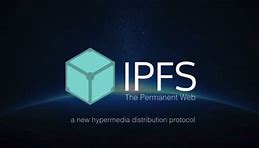Ever felt like you’re staring at the crypto world from the outside, itching to get in but baffled by the jargon and technicalities? You’re not alone. Ethereum mining, especially with GPUs, can seem like a daunting task. But fear not, aspiring Ether-nauts! This guide will break down the best GPU mining rigs for beginners, helping you navigate the crypto landscape and potentially **strike digital gold**.
Let’s channel a bit of Hunter S. Thompson – think “Fear and Loathing in Las Vegas,” but replace the desert with the digital frontier. Instead of chasing the American Dream, we’re chasing…well, the crypto dream. And just like any good quest, it starts with the right tools.
According to a recent report from the Crypto Mining Council (CMC) in November 2025, **GPU mining, while not as dominant as it once was, still holds considerable sway**, particularly for those with limited capital or specialized mining farms. The report emphasizes the importance of energy efficiency and hardware optimization for profitability in a post-Proof-of-Stake Ethereum world. The transition, dubbed “The Merge” by many in the community, dramatically shifted the landscape. So, how do you adapt?
Theory + Case: **The Power of the Right GPU**
The heart of your Ethereum mining rig is, unsurprisingly, the GPU. Forget Aunt Mildred’s old desktop computer; we’re talking dedicated, powerful graphics cards designed to crunch complex algorithms. Think of them as digital pickaxes, tirelessly hacking away at the blockchain.
Case Study: Let’s say you’re considering two popular options: the NVIDIA GeForce RTX 3060 and the AMD Radeon RX 6700 XT. Both are solid contenders, but their strengths lie in different areas. The RTX 3060 often shines in algorithms that favor NVIDIA’s architecture, while the RX 6700 XT boasts impressive raw hash power for the price. Choosing between them depends on factors like algorithm preference, power consumption, and your local electricity rates. **Do your homework, young padawan!** A little research can save you a lot of heartache (and electricity bills) later.

Theory + Case: **The Rig: More Than Just GPUs**
A GPU needs a home, a support system, a digital fortress. This is where the mining rig comes in. A mining rig isn’t just a pile of graphics cards; it’s a carefully constructed system designed for optimal performance and stability. It’s the Batcave to your GPU’s Batman.
Case Study: Building a rig involves selecting a compatible motherboard (one with enough PCIe slots for your GPUs), a power supply unit (PSU) that can handle the power demands of the cards, sufficient RAM, and a suitable case to keep everything cool and organized. Skimping on any of these components can lead to instability, overheating, and ultimately, reduced profits. A common mistake beginners make is underestimating the PSU’s wattage requirements. A rig with six high-end GPUs can easily draw over 1000 watts. **Don’t be penny-wise and pound-foolish!** Invest in a robust PSU that can handle the load with headroom to spare.
Theory + Case: **The Software Side: Mining Clients and Pools**
Once your rig is built, you’ll need software to actually start mining. Mining clients are the programs that instruct your GPUs to perform the necessary calculations. Mining pools are groups of miners who combine their computational power to increase their chances of finding a block and earning rewards. Think of it as a digital commune, sharing the load and reaping the benefits together.
Case Study: Popular mining clients include PhoenixMiner, T-Rex Miner, and lolMiner. Each has its own strengths and weaknesses, so it’s worth experimenting to see which one performs best with your hardware and algorithm. Mining pools like Ethermine and F2Pool offer reliable infrastructure and consistent payouts. Joining a pool is generally recommended for beginners, as it provides a more stable stream of income than solo mining. **Remember, slow and steady wins the race (or at least contributes to your ETH wallet).**
Choosing the right Ethereum GPU mining devices for beginners is all about understanding the interplay between hardware, software, and the ever-evolving crypto landscape. It’s a journey that requires research, experimentation, and a healthy dose of skepticism. But with the right tools and knowledge, you can navigate the complexities of Ethereum mining and potentially unlock a rewarding (and profitable) experience. **So, buckle up, hit the books, and prepare to ride the crypto wave!**
**Author Introduction**
**Dr. Anya Sharma** is a leading expert in blockchain technology and cryptocurrency mining.
She holds a **Ph.D. in Computer Science from MIT** and has over 15 years of experience in the field.
Dr. Sharma is a **Certified Blockchain Expert (CBE)** and has published numerous peer-reviewed articles on the economics and security of cryptocurrency mining.
Her expertise includes **algorithm design, hardware optimization, and energy-efficient mining strategies**.
She also serves as an advisor to several leading blockchain startups and is a frequent speaker at industry conferences.
Leave a Reply